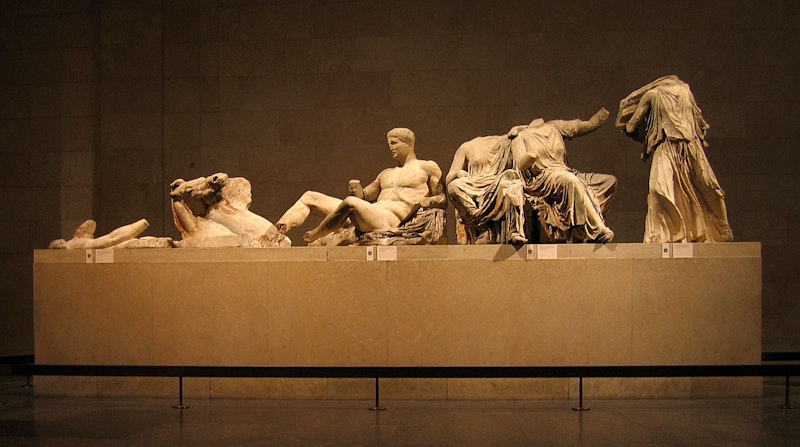Recently, Sir Norman Rosenthal, who was the exhibitions secretary of the Royal Academy of Arts for 30 years, wrote a column in The Art Newspaper that broke the ice on a taboo subject: imposing a statute of limitations on the restitution of art stolen by the Nazis.
History has always looked after works of art in strange ways. Art has been looted throughout recorded time and, as a result, been arbitrarily distributed and disseminated throughout the world. Of course, what happened in the Nazi period was unspeakable. I believe, however, that grandchildren or distant relations of people who had works of art or property taken away by the Nazis do not now have an inalienable right to ownership. If valuable objects have ended up in the public sphere, even on account of the terrible facts of history, then so be it.
This is the reality of the art world. Before the modern museum was solidified, vast amounts of art were at the mercy of wars, private collectors, plunderers and the illegal antiquities trades. It’s doubtful there is a major museum without objects of dubious provenance. The Elgin Marbles are the most popular example of modern society correcting the ills of history. Greece reasonably argues that the sculptures—taken from the Parthenon by Thomas Bruce, Seventh Earl of Elgin, in the early 19th century—are a part of the country’s cultural identity. It is a moral outrage, they insist, and popular opinion would tend to agree.
The issue of forcibly returning artwork stolen by the Nazis to descendants of the original owner is not quite the same as the Elgin Marble scenario. The world cannot give the Jewish people back their culture and heritage that were destroyed in World War II—the moral outrage behind restitution. Restitution cases also remind us rather bluntly that art is a commodity; it is a thing that is valued and sold and subject to laws and taxes.
One of the onuses behind Rosenthal’s argument is the notion of the public museum. An average family can head into any major museum and enjoy art that spans from ancient Mesopotamia to the contemporary world. Such encyclopedic museums elevate their collections by the very fact that they keep all that art in one place for the world to enjoy. Restitution cases hurt these museums, and by extension, the greater art-loving public: The descendents immediately auction off the work to a private collector able to pay vastly more than a museum, and thus the artwork settles into the private sector.
Rosenthal explains some seedier aspects of restitution:
There is much market-driven hypocrisy buried within the subject of restitution. The art market encourages restitution from museums, which is particularly cynical and unpleasant—it is well known that lawyers and auction houses are trying to drum up trade in this way. Auction houses, the trade and the high value of works of art all have legitimate functions, but this kind of provenance activity does not reflect well on the world of art. It is like a microcosm of what is going on in the wider world—for instance, the illegitimate selling of sub-prime mortgages that has now caused such deep financial trouble around the world.
Writing in The Guardian, Jonathan Jones adds:
The dark side of restitution became very visible last year, when the Royal Academy's exhibition of Russian art (and perhaps this experience made Rosenthal think) was menaced by restitution claims. In this case, it is the descendants of Russian art collectors whose collections were nationalised after the 1917 Revolution who want "their" property back. It was amazing how such claims were reported as if their moral case were self-evident. In reality, anyone who has visited the Hermitage in St Petersburg or the Tretyakov Gallery in Moscow knows how much good these museums do, what beacons of civility and culture they are, how brutish it would be to weaken their collections - and that is true of all public museums, everywhere.
I don’t know if the world will allow a statute of limitations on the restitution of art stolen by the Nazis. As Rosenthal points out, some feel Germany can’t be punished enough for its crimes, even though much of the art in question is not coming directly from Germany. The machinations of restitution, though, spur a logical chain reaction that ends with all art being returned to its original country of origin. That will never happen.
Jones argues that “[m]emory is being vandalised in the name of memory,” and he is more aggressive in his defense of public museums. While I can’t imagine any sort of compromise between the several sides of this debate, what I do think would help ameliorate the situation is a greater global commitment to lending art. I agree that the great public, encyclopedic museums occupy a crucial position in global culture; their continued funding is critical. But not everyone can afford the plane tickets (or admission fees); museums need to start making the trips themselves. That won’t stop the restitution claims and it won’t stop the lawsuits, but it will help keep museums from growing stagnant. And this is not to ignore the amount of lending that currently goes on. It should be doubled—tripled—to the point where the museums of the world are a floating mosaic of culture, at any given moment a window into the various threads of history that brought us to today. I have never in my life forgotten the Van Gogh retrospective that rolled through Washington, D.C., when I was in elementary school. I went with my mother, and was simply floored by what I saw. That I grew up in as international a city as D.C. was beside the point: when art travels, people follow it, and their lives are thus rendered.

